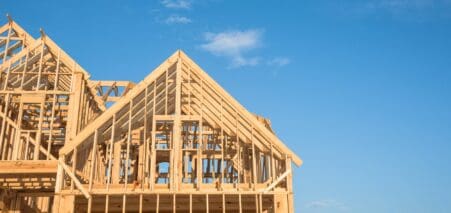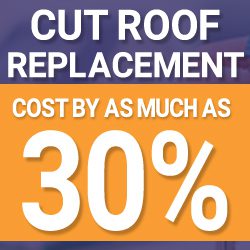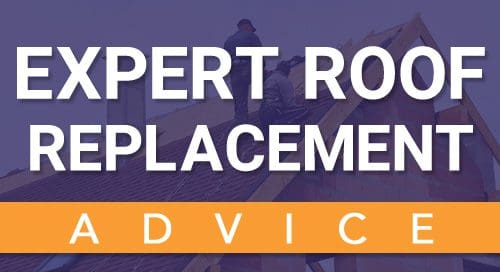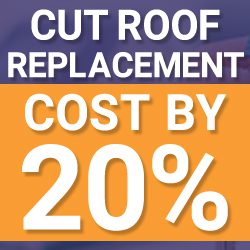
How to Select the Right Type of Roof for Your New Home
Selecting the right roof for your new home is a crucial decision that affects not just the aesthetic appeal of your house but also its functionality, durability, and energy efficiency. The right roof should complement your home’s architectural style, suit the local climate, align with your energy goals, and fit within your budget. In this blog, we’ll explore the key factors to consider when choosing a roof for your new home and compare some popular roofing types along with their benefits.
Considerations in Choosing the Right Roof
When selecting the roof for your new home, there are several crucial factors that homeowners and new buyers must consider. Each of these elements plays a significant role in ensuring that the roof not only adds aesthetic value but also functions optimally for years to come.
Architectural Style and Aesthetic Appeal
The architecture of your home largely dictates the type of roof that will complement it. For instance, a Victorian-style home may benefit from the classic charm of slate tiles, while a modern minimalist house might look best with a sleek metal roof. The roofing material and style should be in harmony with the overall design of the house. The color and texture of your chosen roofing material also contribute significantly to the curb appeal of your home. A roof that matches well with the walls, doors, and landscape can elevate the overall appearance of your property.
Architectural Style
- Harmony with Home Design: The roof should complement your home’s architectural design. For example, traditional homes may look best with classic materials like slate or wood, while metal roofs can suit modern designs.
- Aesthetic Appeal: The color and texture of the roofing material should enhance your home’s curb appeal. A well-chosen roof can significantly enhance the overall look of your home.

Climate Considerations and Environmental Impact
Your geographical location and local climate are key determinants in your roofing choice. In regions with heavy rainfall or snow, a sloped roof made of water-resistant materials would be ideal. Alternatively, in areas prone to wildfires, fire-resistant materials like metal or tile can offer an added layer of safety. Additionally, the roof plays a crucial role in insulation and ventilation. In warmer climates, roofing materials that reflect sunlight and provide better air circulation can help keep cooling costs down.
Climate and Environment
- Weather Resistance: In areas prone to severe weather (like high winds, heavy snow, or hurricanes), choose roofing materials known for their durability and resistance.
- Insulation and Ventilation: Consider how the roof will affect your home’s insulation. Proper ventilation and insulation under the roof can drastically improve energy efficiency.
Energy Efficiency
With rising energy costs and environmental concerns, energy efficiency has become a vital consideration. Certain roofing materials can help reduce energy consumption by keeping your home cooler in summer and warmer in winter. Options like cool roofs are designed to reflect more sunlight and absorb less heat, while others, like green roofs, provide natural insulation. For homeowners interested in sustainable energy solutions, integrating solar panels or opting for solar tiles can be a smart move.
- Reflective Properties: In hotter climates, roofs with reflective properties (like certain metal roofs or cool roofs) can reduce cooling costs.
- Solar Roofing Options: For those interested in renewable energy, consider solar tiles or shingles, which can generate electricity while serving as a functional roof.
Budget and Long-Term Costs
While budget constraints are often a primary concern, it’s important to consider both the initial cost and the long-term financial implications of your roofing choice. Some materials, though expensive upfront, can be more cost-effective in the long run due to their durability and low maintenance. For example, a metal roof might have a higher initial cost than asphalt shingles, but its longevity and minimal upkeep can make it a more economical choice over time. The lifespan and maintenance needs of the roofing material should also be factored into your decision. A less expensive option that requires frequent repairs or replacement may end up being more costly than a pricier, more durable material.
- Initial vs. Long-Term Cost: Some roofing materials may have a higher upfront cost but can be more cost-effective in the long run due to their durability and low maintenance requirements.
- Maintenance and Lifespan: Consider the lifespan and maintenance needs of different roofing materials. A cheaper option might require more repairs and sooner replacement.
Selecting the right roof for your new home involves careful consideration of style, climate adaptability, energy efficiency, and financial factors. Balancing these elements to suit your specific needs and preferences is key to ensuring that your roof is a worthwhile investment for your home.

Popular Roofing Types and Their Benefits
When selecting a roof for your new home, it’s beneficial to be aware of popular roofing trends and their inherent advantages. These trends often reflect advancements in technology, shifts in aesthetic preferences, and a deeper understanding of how roofing impacts both the functionality and overall appeal of a home.
Asphalt Shingles
- Cost-Effective: One of the most affordable roofing options.
- Versatility: Available in various colors and styles.
- Ease of Installation and Repair: Widely known for easy installation and repair.
Metal Roofing
- Durability: Highly durable, often lasting 40-70 years.
- Energy Efficiency: Reflects solar radiant heat, reducing cooling costs.
- Weather Resistance: Excellent for areas with extreme weather conditions.
Slate Roofing
- Longevity: Can last more than 100 years.
- Natural Appearance: Offers a distinctive, elegant aesthetic.
- Fire Resistance: Naturally fire-resistant material.
Wood Shingles and Shakes
- Natural Look: Provides a classic, rustic appearance.
- Insulation Properties: Offers natural insulation.
- Variety: Available in various wood types and treatments.
Tile Roofing (Clay or Concrete)
- Long Lifespan: Extremely durable, with lifespans of 50 years or more.
- Distinctive Style: Offers a unique look, popular in Mediterranean or Spanish-style homes.
- Fire and Rot Resistance: Excellent resistance to fire and rot.
Future-Proofing Your Home with the Right Roofing Choice
In our journey to select the perfect roof for your new home, it’s crucial to consider how your choice will stand the test of time. Future-proofing your home with a roof that not only meets current trends but also anticipates future needs is essential. Let’s look at how making a well-informed roofing choice today can benefit your home in the long run.

Adapting to Future Environmental Changes
Climate change and environmental factors are increasingly influencing homeowner decisions. Opting for a roof that is designed to withstand extreme weather conditions, such as heavier rainfalls, stronger winds, or more intense heatwaves, is a forward-thinking choice. Materials like metal roofing or specially treated shingles that offer higher resistance to such conditions can be a wise investment.
Compatibility with Emerging Technologies
As home technologies evolve, ensuring that your roof is compatible with future advancements is important. For instance, if you might consider installing solar panels or integrated solar tiles in the future, choosing a roof that can support these technologies without requiring significant modifications can be highly beneficial.
Longevity and Timeless Appeal
While it’s tempting to follow the latest roofing trends, it’s equally important to consider the timeless appeal of your chosen style and material. A roof that not only looks good today but will continue to be aesthetically pleasing in the future adds enduring value to your home. Materials known for their longevity, like slate or high-quality metal, can ensure that your roof remains a highlight of your home’s design for decades.
Maintenance and Upkeep in the Long Term
Consider the long-term maintenance requirements of your chosen roofing material. A roof that requires minimal upkeep while retaining its functionality and appearance over time can offer significant savings and convenience. This is particularly crucial for homeowners who prefer a low-maintenance home.
Energy Efficiency and Sustainability
As energy costs continue to rise, selecting an energy-efficient roofing system can lead to substantial savings over time. Roofs with good insulation properties, reflective coatings, or materials that enhance energy efficiency play a pivotal role in reducing heating and cooling costs. Additionally, choosing eco-friendly materials or designs aligns with the growing emphasis on sustainability, making your home fit for the future.
The roof you choose for your new home is more than just a protective cover; it’s a long-term investment in your home’s future. By considering factors like environmental adaptability, compatibility with future technologies, timeless appeal, maintenance requirements, and energy efficiency, you can ensure that your roof is not just a fitting crown for your home today but a wise investment for tomorrow.

Why Roofing Trends Matter
Roofing trends matter because they are often driven by innovations that enhance durability, energy efficiency, and environmental sustainability. They also reflect evolving architectural styles and homeowner preferences. Staying abreast of these trends ensures that your choice of roofing is not only contemporary but also incorporates the latest in roofing technology and design.
Moreover, trends in roofing can influence the resale value of your home. A roof that aligns with current trends is likely to be more appealing to future buyers, should you ever decide to sell your home. It also ensures that your home stays in line with neighborhood standards, which is crucial in maintaining or increasing property value.
Current Roofing Trends to Consider
Sustainable and Eco-Friendly Materials
There is a growing trend towards using sustainable and environmentally friendly roofing materials. This includes materials like recycled shingles, which are made from post-consumer waste and are fully recyclable at the end of their life, and green roofs, which are covered with vegetation and offer benefits such as improved insulation and reduced urban heat islands. These options not only contribute to a greener environment but also offer long-term cost savings in terms of energy efficiency.
Solar Roofing
With increasing focus on renewable energy sources, solar roofing is becoming a popular choice. Modern solar roofs are aesthetically pleasing, blending seamlessly with traditional roofing materials, unlike older solar panel designs. They not only generate electricity, reducing energy bills, but also add a cutting-edge technological edge to the home’s design.
Cool Roofing
Cool roofing is a trend gaining traction, especially in areas with hot climates. These roofs are designed to reflect more sunlight and absorb less heat than standard roofs, thereby keeping homes cooler. This trend is not just about the material but also involves specific colors and reflective coatings that can significantly reduce air conditioning needs.
Architectural Shingles
For homeowners looking for an upgrade from traditional asphalt shingles, architectural shingles are a trending option. They offer a three-dimensional look and come in various styles and colors. Besides their aesthetic appeal, they are known for their durability and higher wind resistance.
Metal Roofing
Metal roofs are increasingly popular due to their longevity, durability, and fire resistance. Modern metal roofing comes in a variety of styles and colors, some even mimicking traditional shingles, tiles, or wood shakes. They are particularly advantageous for rainwater harvesting due to their smooth surfaces.
When selecting a roof for your new home, considering the latest trends in roofing can be immensely beneficial. These trends are often indicators of advancements in roofing technology and shifts in design preferences, ensuring that your home not only looks contemporary but is also equipped with the best roofing solutions available. A well-chosen roof, aligned with current trends, can enhance both the aesthetic appeal and functional efficiency of your home.
Choosing the right roof for your new home involves balancing various factors, including style, climate, efficiency, and budget. Each roofing material offers unique benefits, and the right choice depends on your specific needs and preferences.

Embracing Modern Roofing Trends for Your Home
Continuing our exploration of roofing trends, it’s clear that the choices you make for your home’s roof can have far-reaching implications – from impacting your home’s energy efficiency to defining its overall aesthetic character. Let’s delve further into why embracing modern roofing trends can be a wise decision for your new home.
Enhanced Aesthetic and Functional Appeal
Modern roofing trends are not just about keeping up with the latest styles; they’re also about leveraging advancements in roofing technology for better functionality. For example, the use of architectural shingles not only adds a unique texture and depth to your roof but also offers improved durability against harsh weather conditions. Opting for these modern solutions means your roof is not just visually appealing but also built to last.
Energy Efficiency and Cost Savings
The shift towards energy-efficient roofing options like cool roofs or solar roofing reflects a growing awareness of environmental sustainability and energy costs. By selecting these innovative roofing solutions, you can significantly reduce your home’s carbon footprint and save on energy bills in the long term. In an era where energy efficiency is paramount, these roofing choices can be particularly prudent.
Increasing Home Value
A roof that aligns with current trends and incorporates modern materials can increase the overall value of your home. This is especially important if you plan to sell your home in the future. A trendy, well-maintained roof can be a strong selling point, making your home more attractive to potential buyers who are often willing to pay a premium for homes that incorporate modern, energy-efficient features.
Customization and Personalization
Modern roofing trends offer a wide range of customization options. Whether it’s choosing solar tiles that blend seamlessly with your existing roof or selecting a metal roof in a contemporary color, these trends allow you to personalize your home to reflect your style and preferences. This level of customization was not always possible with traditional roofing materials.
Adaptability to Various Architectural Styles
One of the key strengths of modern roofing trends is their adaptability to a range of architectural styles. Whether your home is a classic Victorian, a sleek modern build, or a cozy cottage, there are roofing options available that can complement and enhance the architectural integrity of your home.
If you’re building a new home and need guidance on selecting the perfect roof, Best Roofing Estimates is here to help. Our team of experienced professionals can provide you with the insights and services you need to choose the best roofing option for your new home. Get a quote for professional roofing services tailored to your home’s requirements. Let us help you ensure that your new home is as beautiful, efficient, and durable as it can be.




Leave a Reply